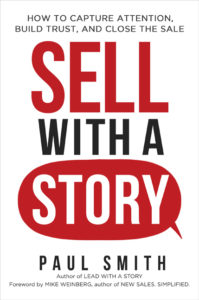Podcast: Play in new window | Download | Embed
Subscribe: RSS
Podcast (lead-with-a-story-podcast-series): Play in new window | Download | Embed
Subscribe: RSS

In the late 1990s, Titleist had a 75 percent market share of the golf ball market among the best golfers in the country (those with a handicap of 15 or less). But that only represented about 5 percent of golfers. It only had a 20 percent market share among the other 95 percent of golfers.
To reach that other 95 percent, conventional wisdom dictated that it should launch a lower-priced, lower-quality version of its flagship Titleist ProV1. The problem with that, however, is that some of its accomplished players buying the $5 ProV1 balls might find the new cheaper version good enough, and trade down to a $3 ball. What should Titleist do?
Consider this: What if I told you there was a new golf ball on the market guaranteed to fly 350 yards off the tee? The only catch is, you have to hit it dead straight or it will slice off 350 yards into the woods. Would you buy it? The answer, of course, depends on how good of a golfer you are. If you’re a scratch golfer, used to playing just above par, you’d probably love it! But if you’re a duffer, or even an average golfer, you wouldn’t be interested in wasting your money on balls that will only get lost.
Instead, what if I offered you a golf ball guaranteed to go straight down the fairway, no matter how poorly you hit it? The catch is, it will only go a maximum of 225 yards. Would you buy that ball? Again, it depends. The duffer would fill his bag with balls like that. The pro would scoff at it.
That was the insight at Titleist that led the company to break from conventional wisdom a decade and a half ago and launch Titleist NXT. While it didn’t quite guarantee to keep you in the fairway on every shot, it was designed to create less spin, have a soft feel, and deliver more consistency—exactly what most average golfers want.
And because it didn’t deliver the short-game spin, feel, and control that Titleist’s flagship model ProV1 would, accomplished golfers wouldn’t consider trading down from the ball they’d been buying for years.
The NXT turned out to be a great decision. Titleist’s market share more than doubled, from 20 percent to 43 percent, among the average golfers, while still growing among the elite.
The Lesson
Titleist did that by realizing that average consumers don’t necessarily have watered-down needs compared to the most demanding ones. They have different needs entirely. Understand your consumers deeply, and design a product to delight each group separately, which may not be the same thing.
Use these links to subscribe to this podcast on iTunes or Stitcher, or Podbean.
Source: Lead with a Story: How to Craft Business Narratives that Captivate, Convince, and Inspire, by Paul Smith.
—
 Paul Smith is one of the world’s leading experts on business storytelling. He’s a keynote speaker, storytelling coach, and bestselling author of the books Lead with a Story, Parenting with a Story, and Sell with a Story.
Paul Smith is one of the world’s leading experts on business storytelling. He’s a keynote speaker, storytelling coach, and bestselling author of the books Lead with a Story, Parenting with a Story, and Sell with a Story.


 Connect with him via email here.
Connect with him via email here.
Follow him on Facebook, LinkedIn, Twitter, and Instagram.
Sign up for his newsletter here to get one new story a week delivered to your inbox.

